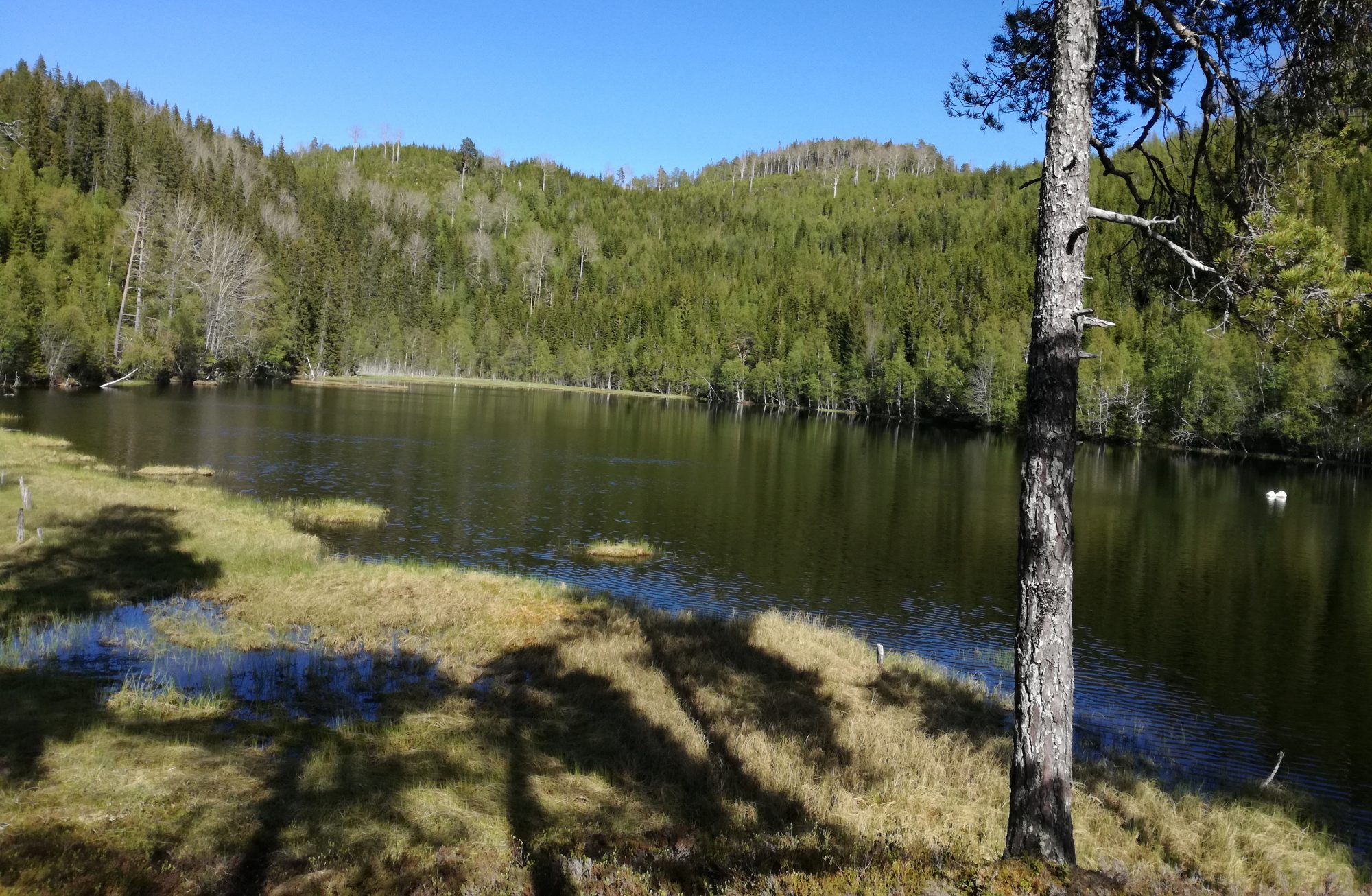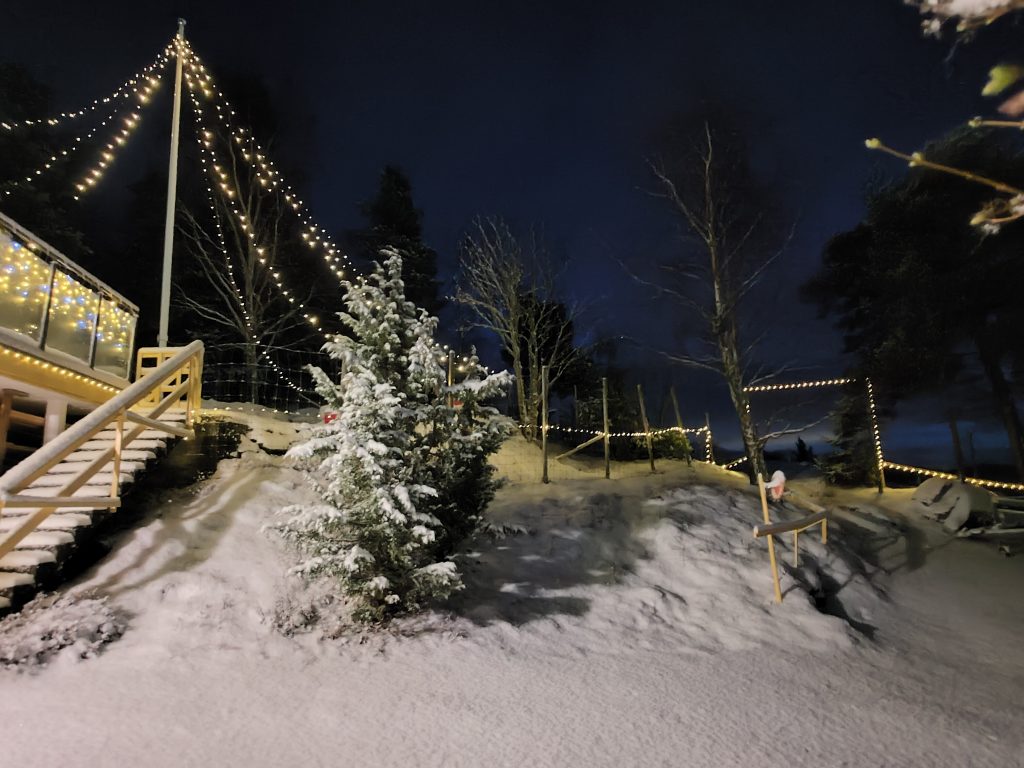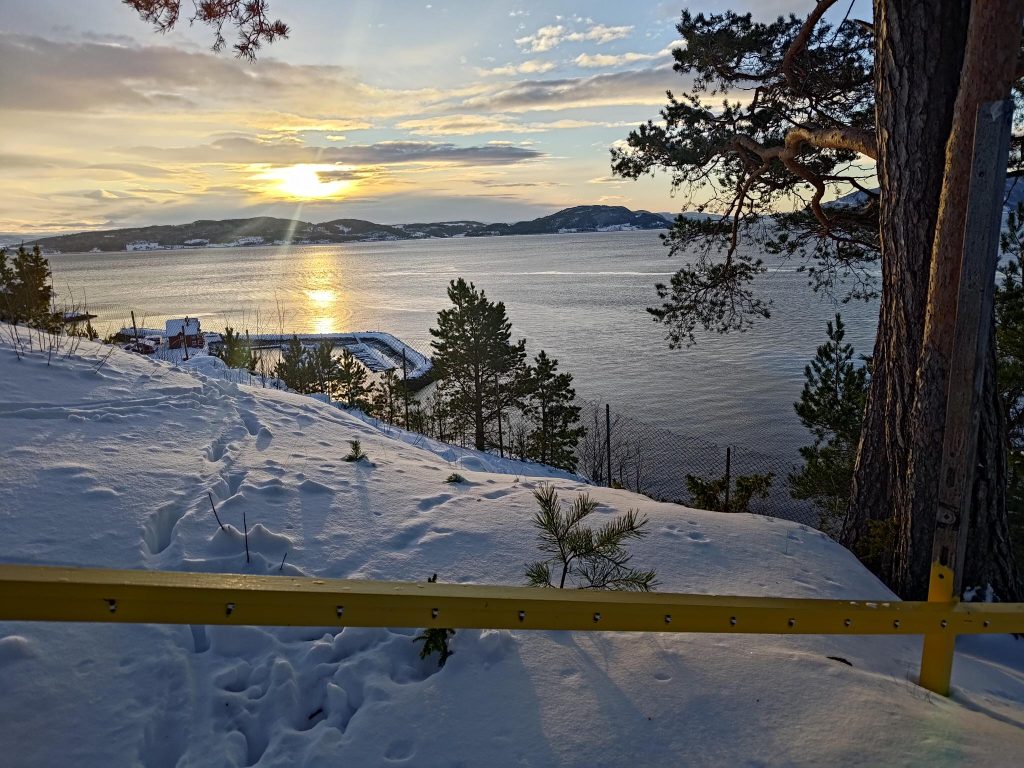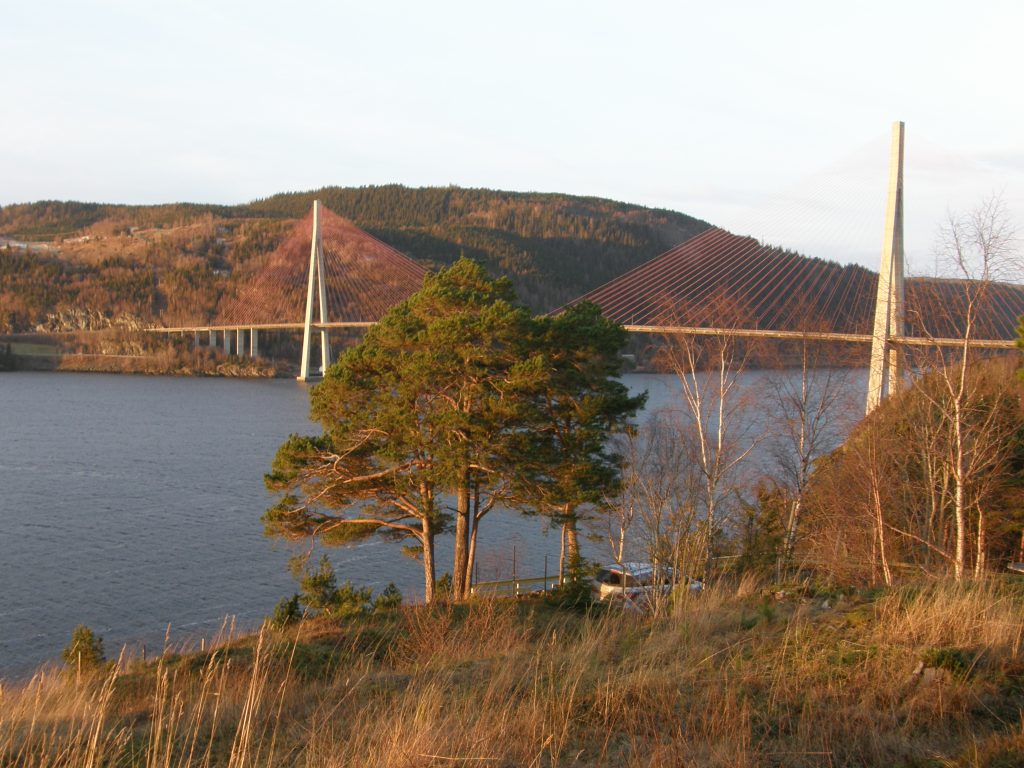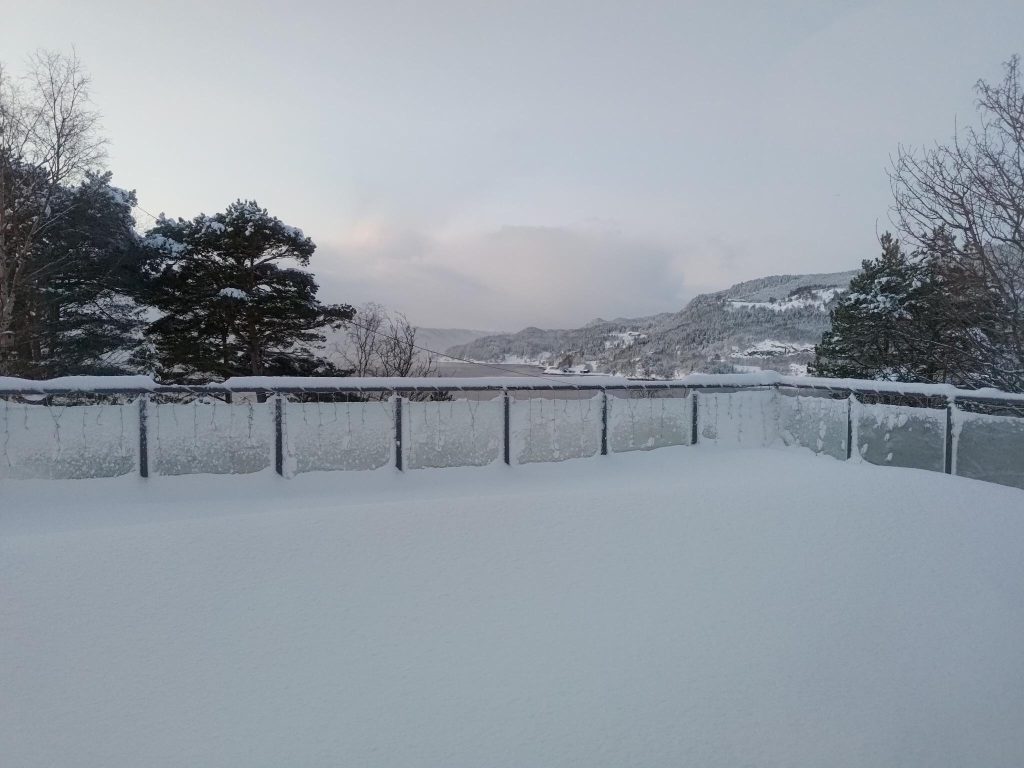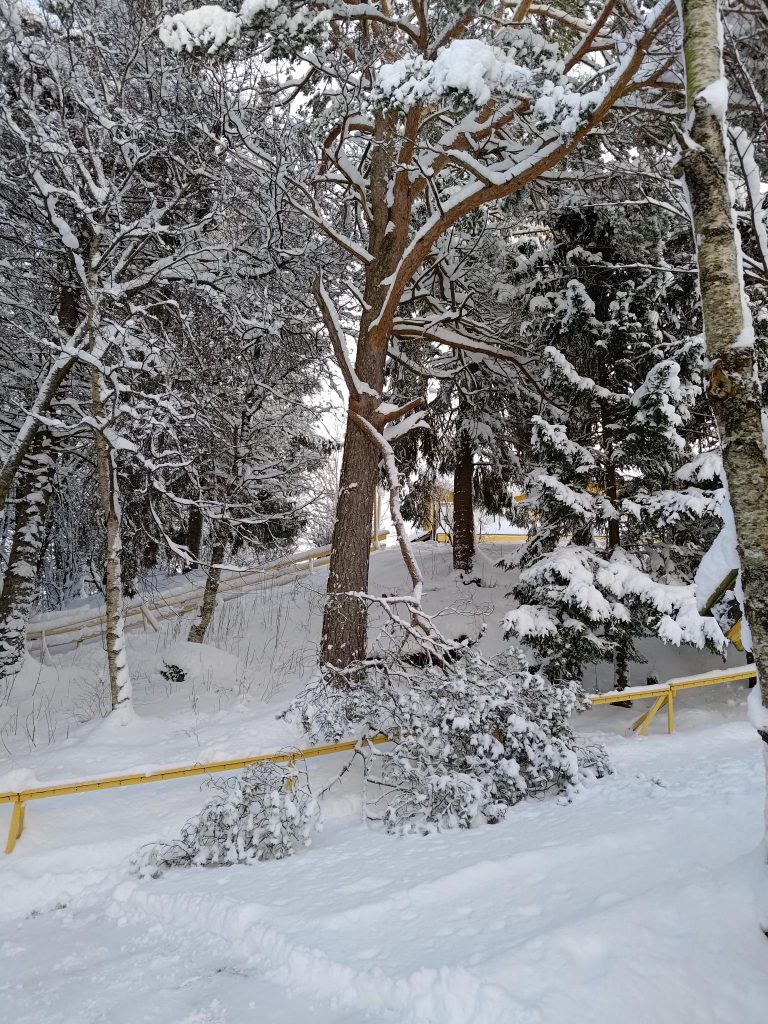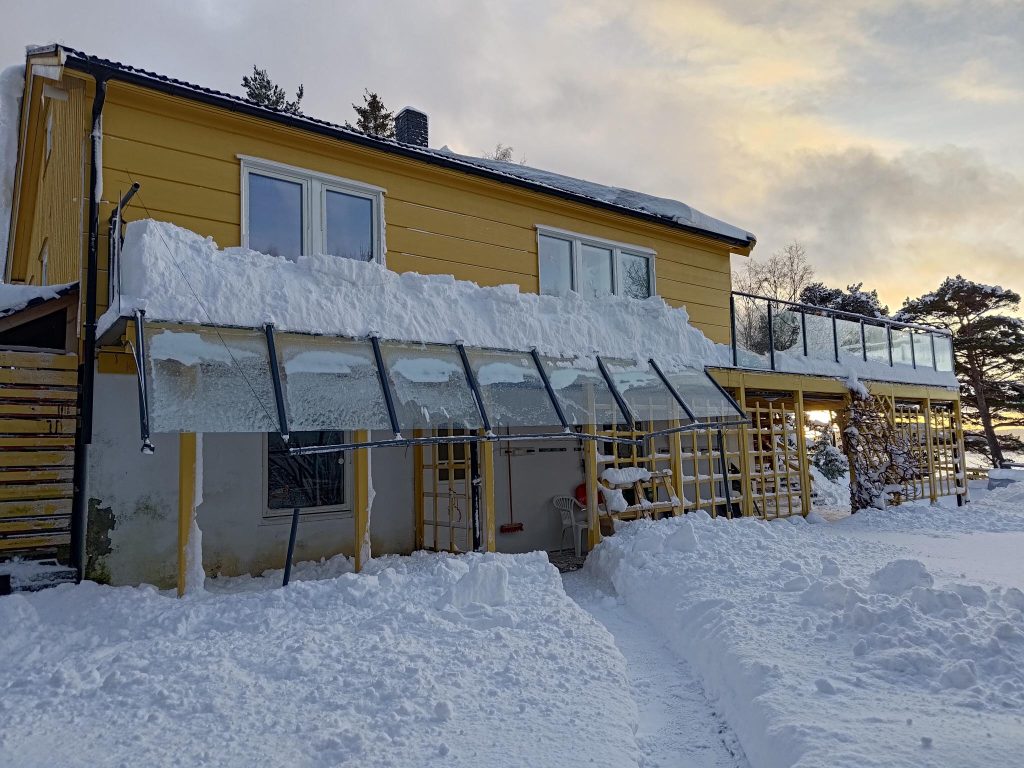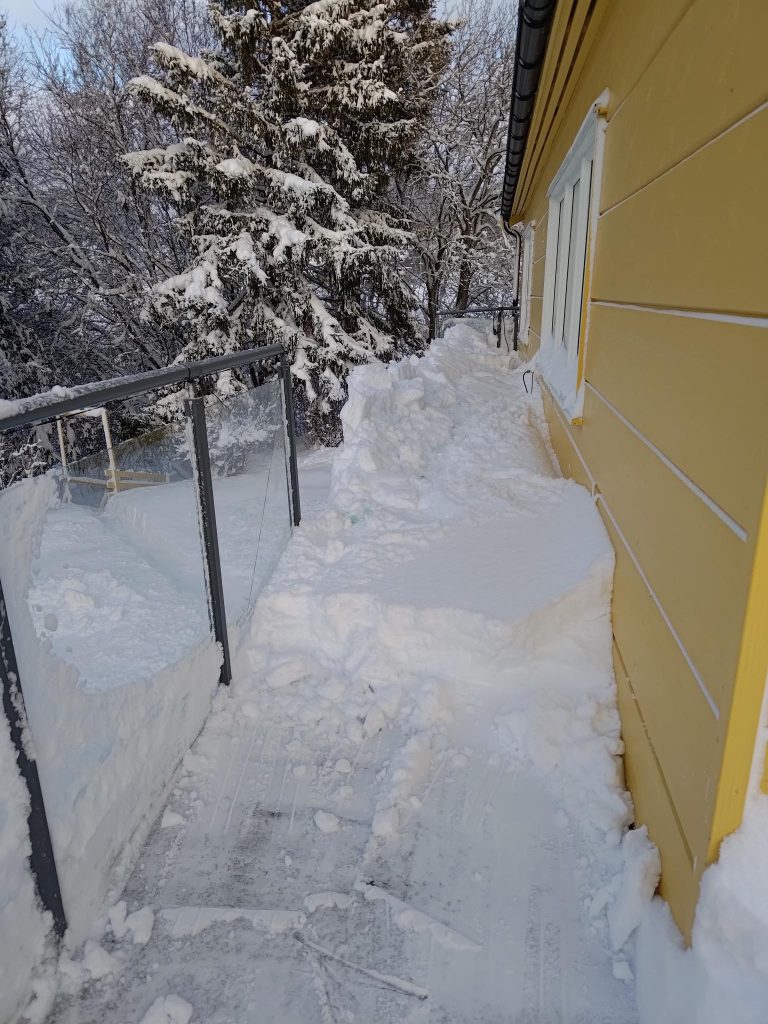I’m finally getting out for walks in the woods again, after a long pause, mostly caused by poor weather. This week there is a pause from storms, both wind and rain. The air is refreshing at about -1 degree centigrade. Getting out of the house in the middle of the day gives me some much needed daylight.
About 10 days ago, in the afternoon of Friday, the 17th of January, our area of Trøndelag in Norway was hit by a storm with very strong winds, of hurricane strength in the gusts. The power went out for us about 4 pm and we didn’t get it back again until noon on Saturday. At its peak, there were about 40 000 homes without power. The main reason the power was out so long was that the wind had blown down an enormous number of trees. One of the contributing factors for so many trees down was that the ground was not frozen and there had been quite a bit of rain in the days before the storm. So when I went for my walk today, I was interested in seeing how much damage had been done in our local area.
The morning after the storm we had noticed several large trees across the road leading to the cabins beside us. Today they had been at least partially removed. There was also a tractor and a man with a power saw working on cutting down other trees that were no longer upright.
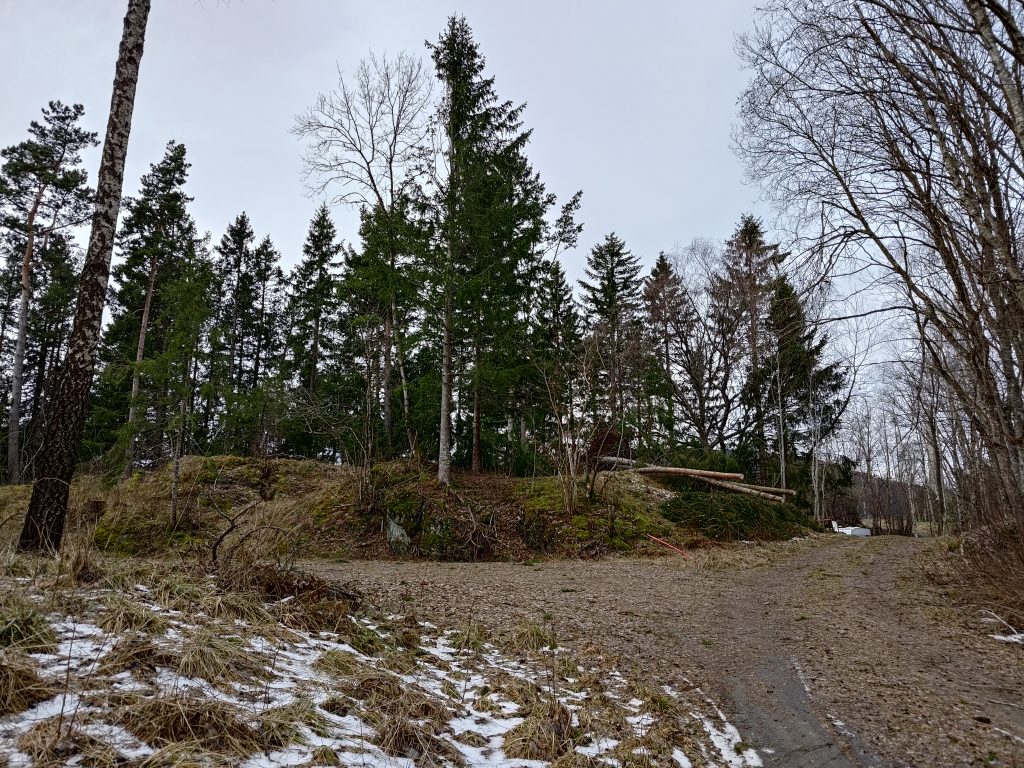
Most of the trees that are blown over in the wind are spruce trees as they have very shallow roots. A strong gust of wind, from a slightly different direction than the tree is used to, will often make them fall over, with their roots in the air. The main way to help the trees is to have a mixed variety of trees standing together so that the roots are intertwined and the roots from deciduous trees help hold the conifers in place. Solitary trees will be affected more, as are the trees on the windward side of a grove of trees.
As I reached the crest of the hill that I walked up, I saw the following, a pile of logs and a bigger pile of branches. Note that most of our snow has disappeared now.
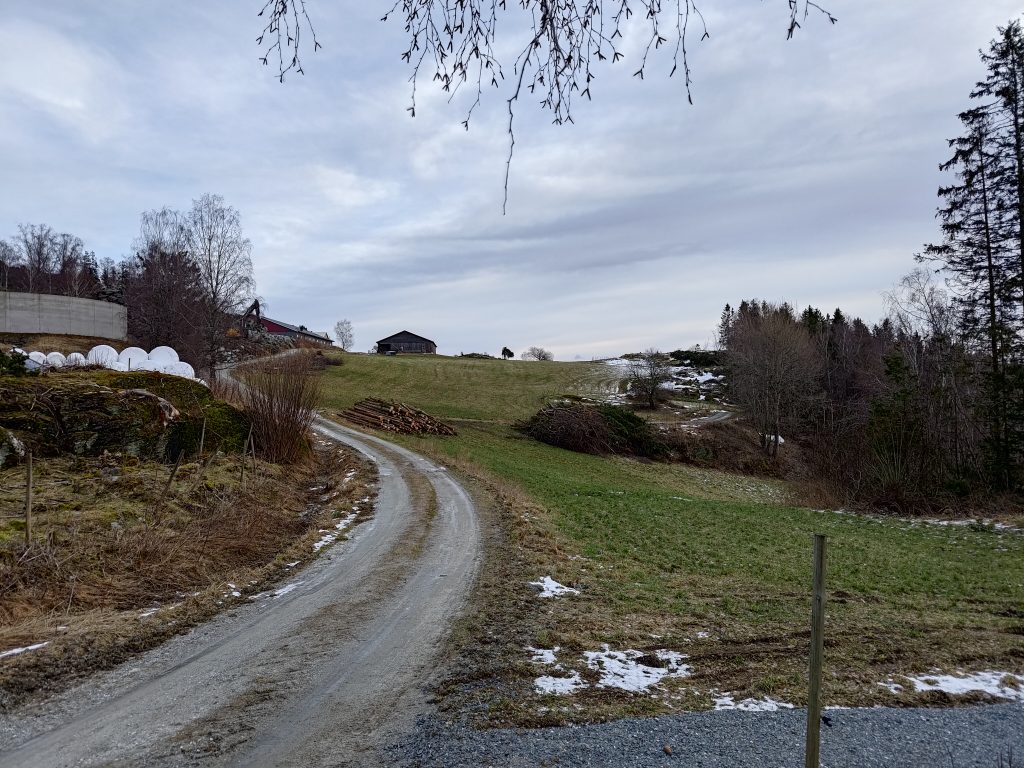
So I started wondering if all those trees had come down in the wind, or were they planned logging? It’s hard to know, but I wonder if it was a combination of both. My walk takes me down the road that goes off to the right in the distance. Locally it is known as the Golden Toll Road, as it is a private road and normally has a locked bar across the road.
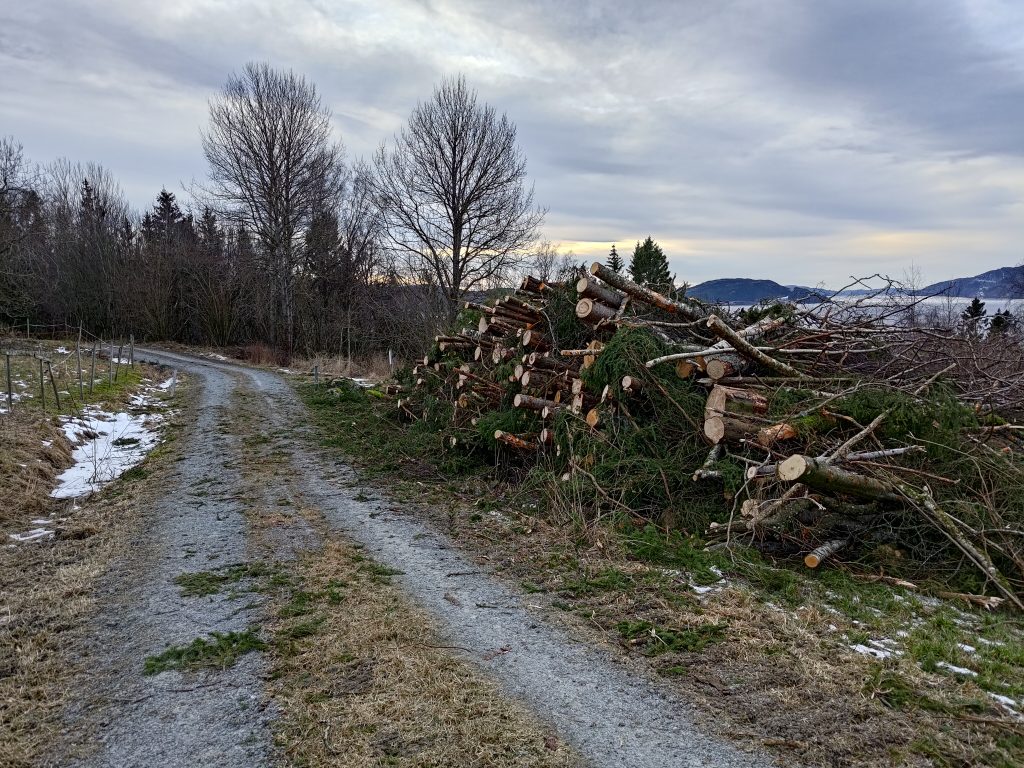
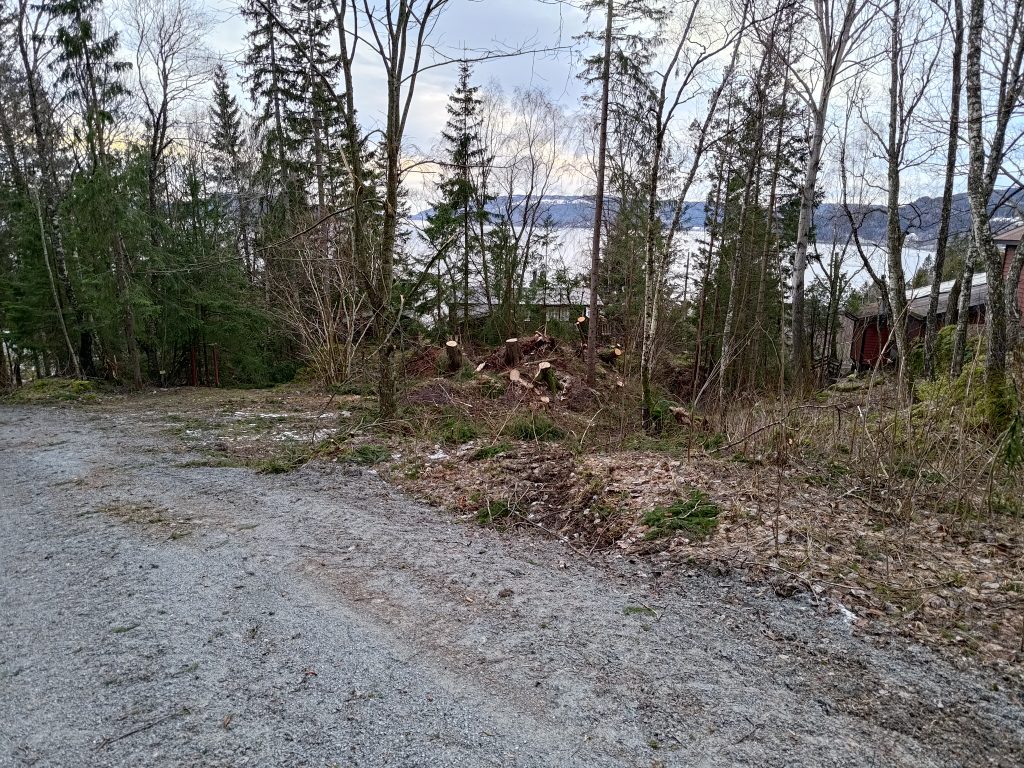
As I continued along the road, it was quite obvious that at least some of the trees were taken from along the road. This is quite a shady area in the summer, so I can imagine that the cabin owners wanted some of the trees taken out, to make it brighter along the road and so that trees were not hanging over the road. Whoever owns the land will also be able to sell the trees for lumber, a common source of extra income for farmers.
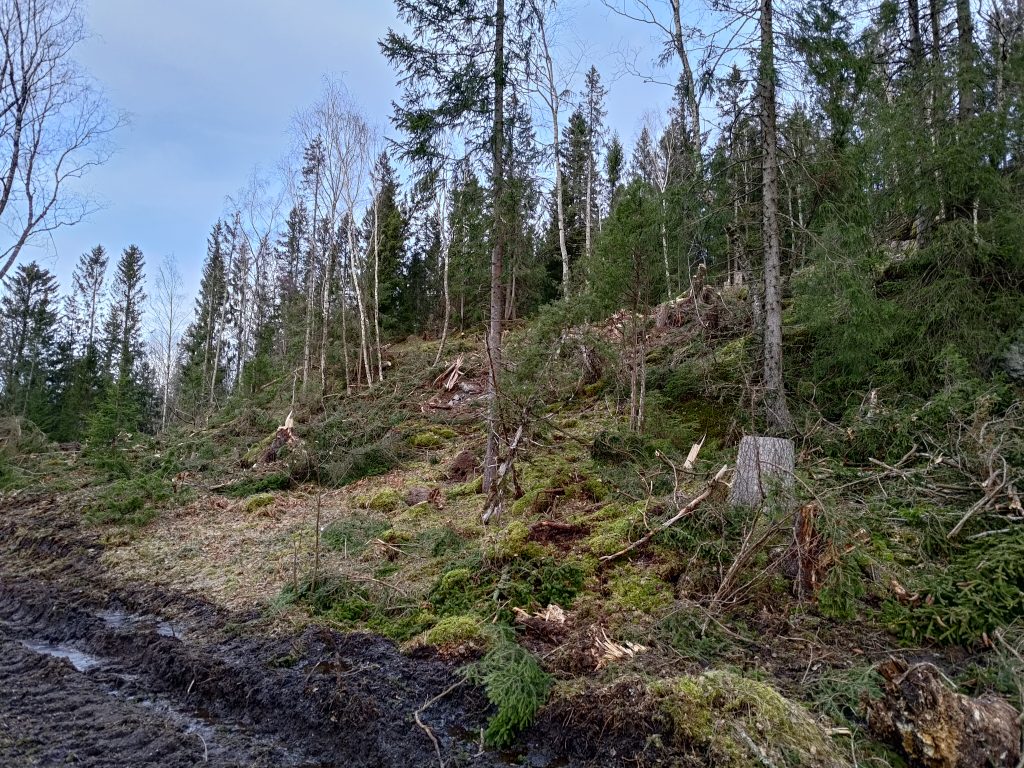
My walk continued from this road that leads to many cabins to a path through the woods. Over the years that I have walked through these woods, there are always changes. Old trees break or fall over in winter storms. New trees sprout. Those who are responsible for keeping the trail usable usually go along the trail in the spring and make sure the fallen trees are cleared away. This trail is part of a longer trail that goes about 20 km from Vangshylla to Straumen (which is 12 km away by road).
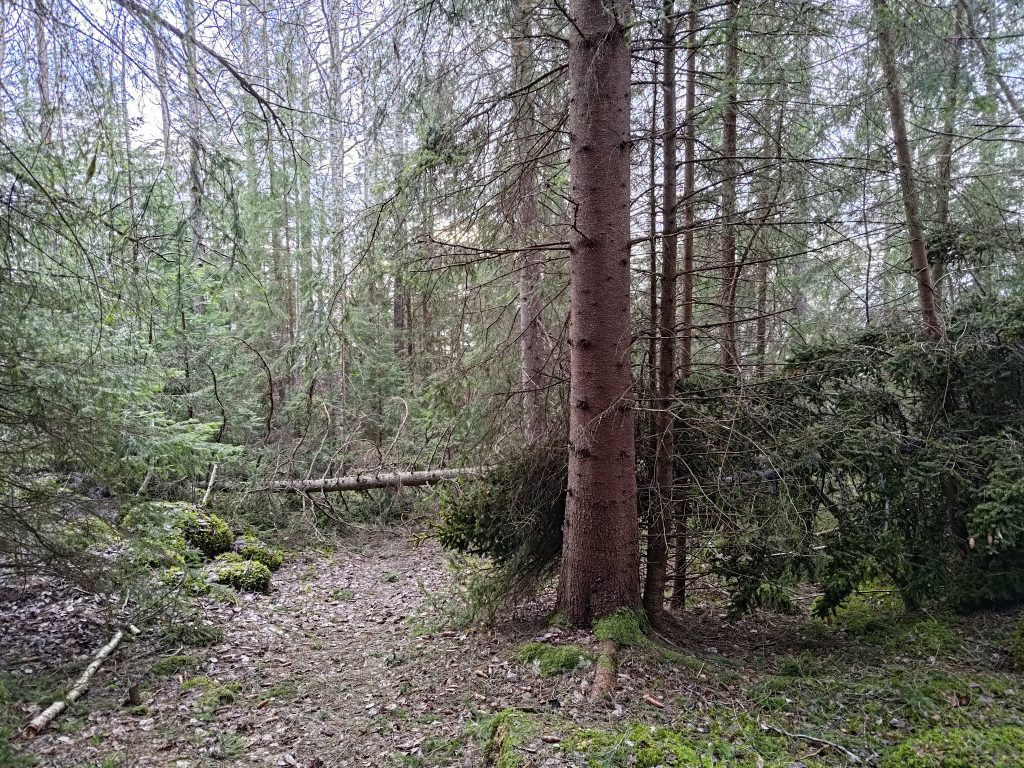
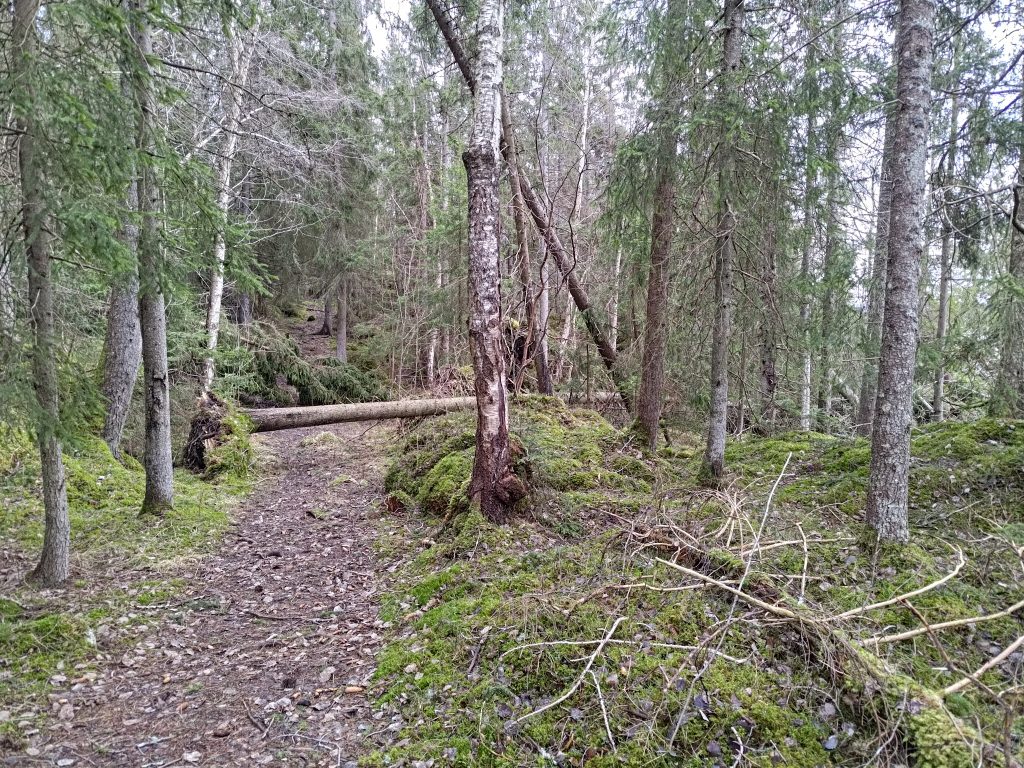
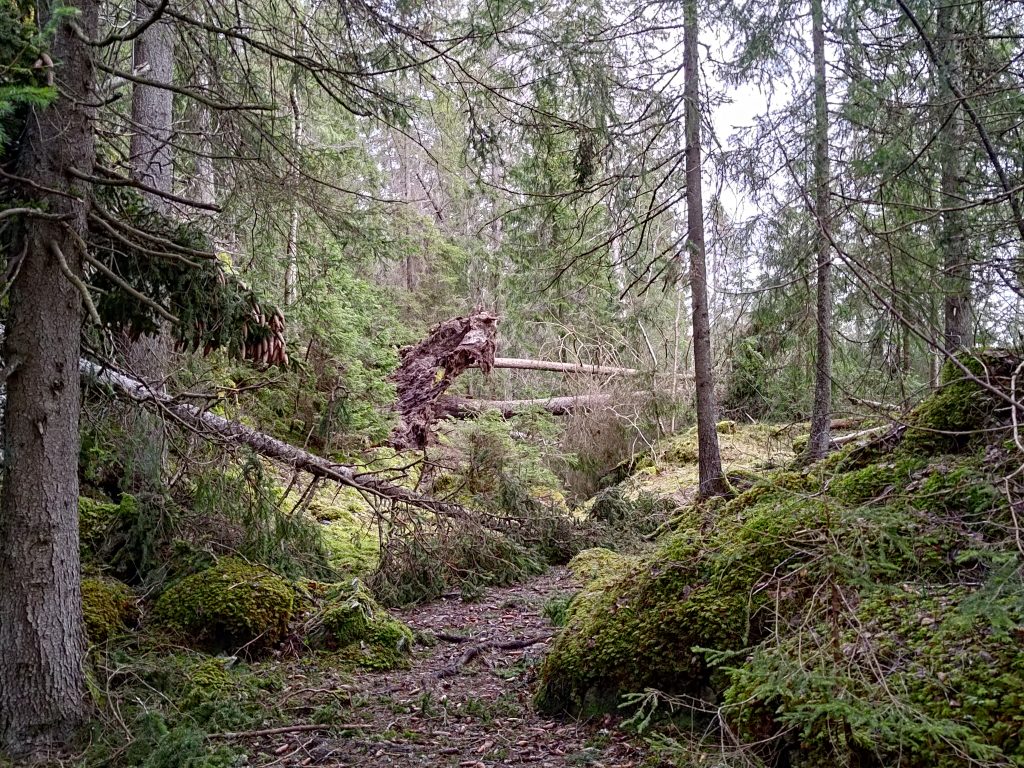
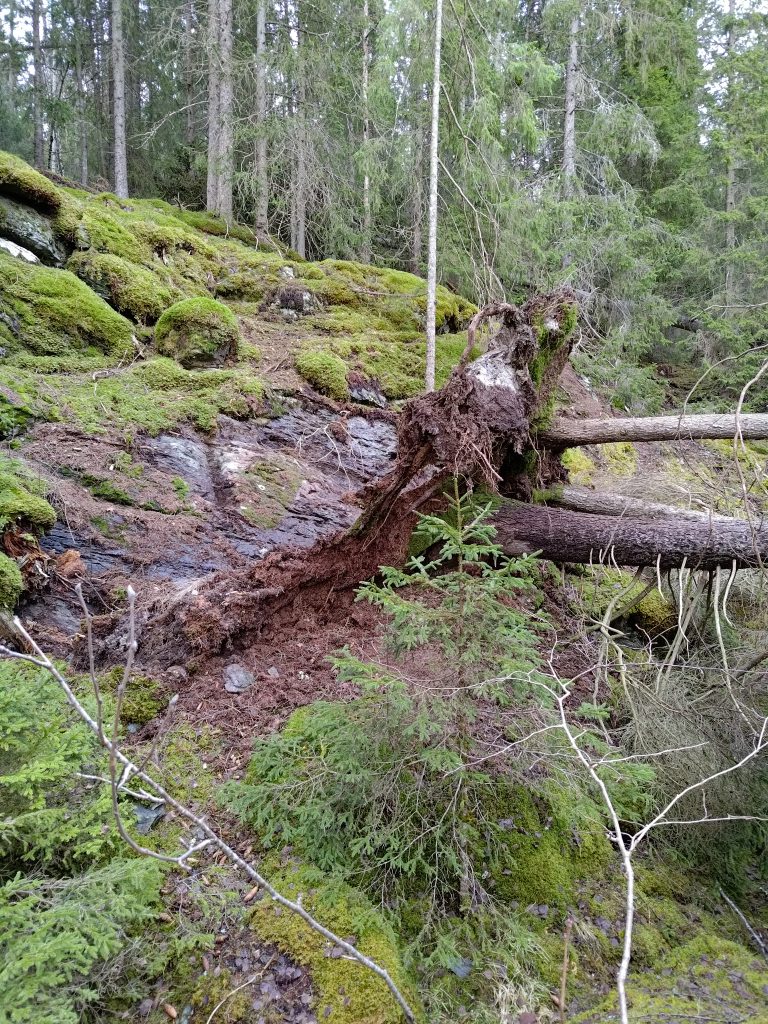
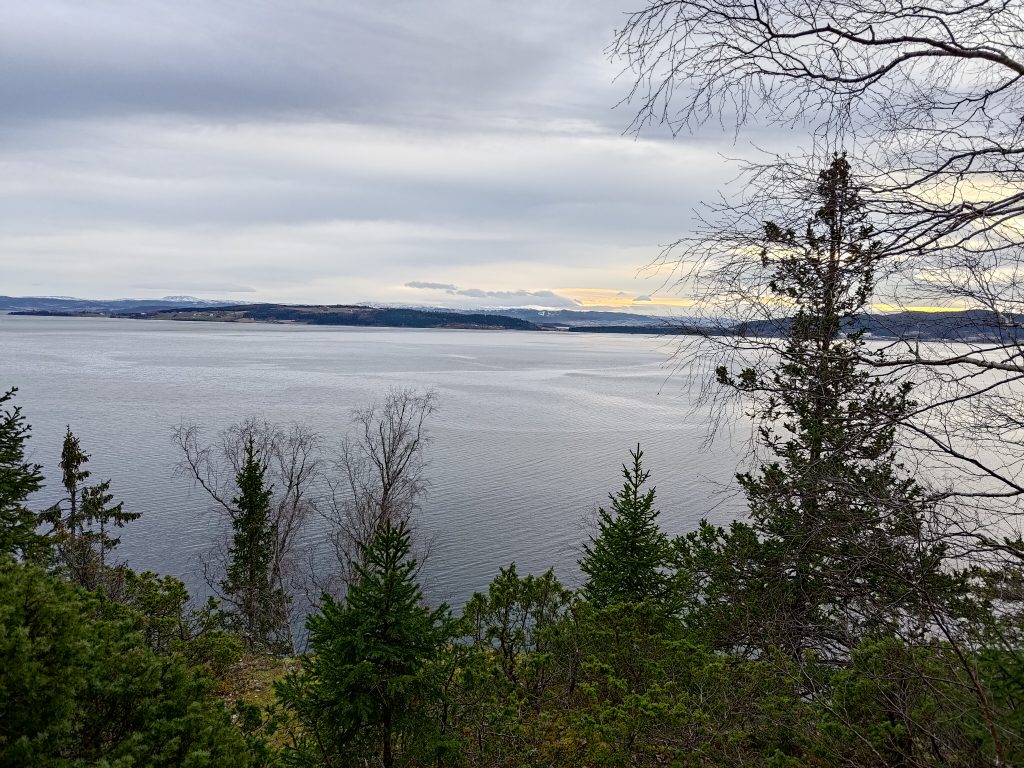
The goal for my walk was what we call Bear Cliff (in Norwegian Bjørnbrøttet). There is a book in a box where I wrote my name. I was the fourth person to write my name in the book in 2025. It hasn’t really been good weather in most of January for walking in the woods. The first names for 2025 were recorded yesterday which was a Sunday.
As I continued my walk, taking a circular route for as much as I can, I came across one place where there had been damage to human-made things, though thankfully not the cabin itself.
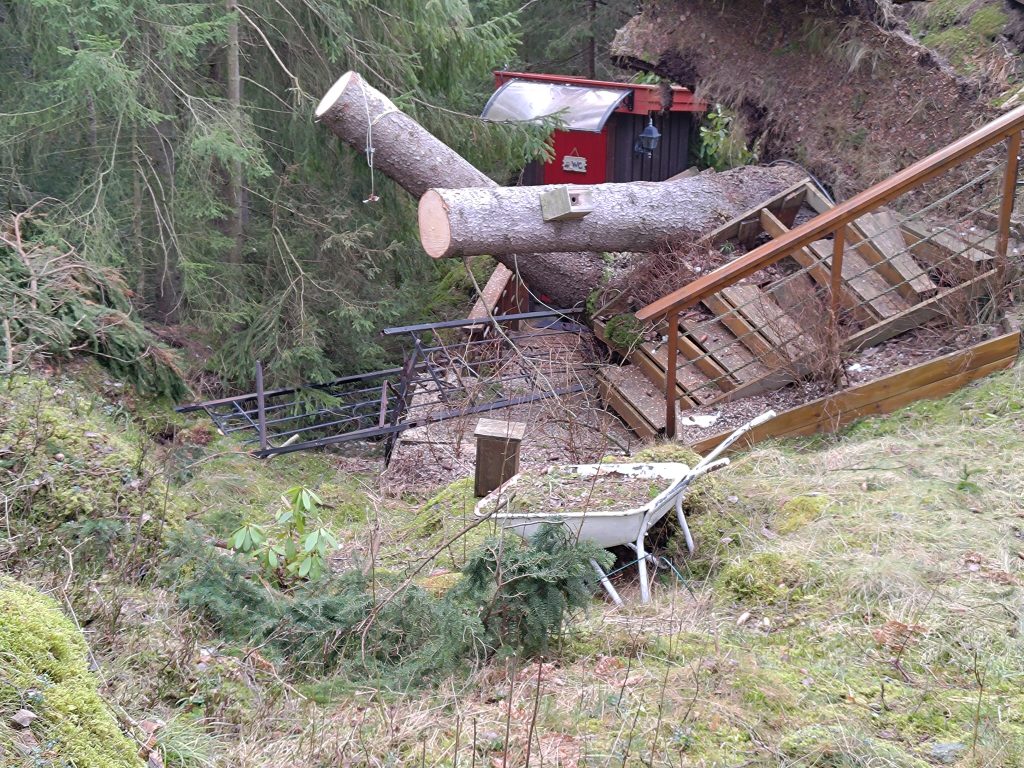
The rest of my walk was quite uneventful. But I don’t need to see the results of a storm every time. Just walking amongst the trees is enough for me. I used an hour on today’s walk and I must try to prioritize doing more such walks. Getting away from roads and people can be very pleasant. I got back home feeling very refreshed and motivated both to write this blog and to do similar walks.
